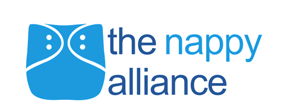NAPPY GLOSSARY
If you’re new to reusable nappies you may find yourself confused by some of the language used to talk about some of the parts and types of nappies. There are many more variations in reusable types and style than in single-use disposables, with a wide range of choice to suit baby’s needs.
Below we’ve listed some of the common terms that you might come across with a helpful explanation of what they mean.
| All-In-One (AIO) | A type of nappy where the waterproof and the absorbent parts are all sewn together. |
| All-In-Two (AI2) | This is a similar type of nappy to an all-in-one, but the inner and outer can be either detached or washed as one piece. |
| Boosters | Boosters are used to add extra absorbency to a complete nappy system. They can be used with any kind of nappy and do not necessarily need to be the same brand as the rest of the nappy. |
| Disposable/Single-use | A nappy which is designed to be used once and thrown away. These types of nappy can take up to 500 years to break down in landfill or may be incinerated by some local authorities, realeasing harmful greenhouse gases into the atmosphere. |
| “Eco-disposable” | A single-use nappy which claims to be compostable or biodegradable – N.B. there is no agreed standard for an “eco-disposable” nappy and they may not all be able to be disposed of in the same way. This is still a single-use product and still consumes resources in production and distribution. 50% of waste in the UK goes to incineration so it may never get to landfill to break down. |
| Flat | The original type of reusable nappy system. This is one piece of material which is folded to form the absorbency and then secured with a nappy gripper (in years gone by a safety pin!). This type of nappy can include the older type of terry nappies, muslins and prefold nappies but are now also available in easier-to-fold shapes and newer materials such as tencel and bamboo. They are used with a waterproof wrap over the top. |
| Hook and Loop | Sometimes referred to by the trade names “Velcro” or “Aplix”, this is a popular type of nappy fastening. This is a very easy to use type of fastening and is most similar to how single-use disposables are fastened. |
| Hybrid Nappy | a nappy where there is an option of a single use or reusable insert. |
| Inserts | The absorbent part of a pocket nappy – these are separate from the main nappy and are placed inside the pocket. |
| Liners | These are a non-absorbent piece of material which goes on top of a nappy next to baby’s skin. These can be used to make solid waste easier to clean off the nappy, to protect the nappy from barrier creams, to make the nappy more comfortable for baby. |
| Nappy Grippers | These replace safety pins when using flat nappies or some shaped nappies with no fastenings. They are a t-shaped plastic grip with no sharp edges that holds a nappy firmly in place. |
| Nappy Wrap | Nappy wrap – this is a waterproof outer cover that stops nappies getting clothes wet. You will need one of these for any two-part nappy, such as shaped nappies and flats. |
| One Size | Sometimes called “birth to potty” or “one size fits most” – this is a type of nappy that grows with your baby and size can be adjusted. |
| Pocket Nappies |
This type of nappy has an opening between the top layer and the waterproof outer that forms a pocket which you put separate inserts in to for absorbency. |
| Poppers | These are another popular nappy fastening – these are small plastic press-studs which fasten the nappy and are often to adjust the rise. These can be harder wearing than hook-and-loop and can be more difficult for bigger babies to undo. |
| Prefold Nappy | A type of flat nappy where the absorbent part is folded flat into a pad shape, often with a sewn in absorbency in the centre. These are then laid into an outer or wrap. |
| PUL | Polyurethane laminate – the material that makes nappies waterproof. |
| Shaped Nappy | A two-part nappy where the absorbent inner is pre-cut and sewn to an easy-to-fit “nappy shape”, without needing any folds. Most have poppers or hook-and-loop fastenings to fit to the waist. |
| Stay Dry layer | A layer of non-absorbent fabric in the nappy which sits next to baby’s skin made from microfibre, fleece, athletic wicking jersey or other non-absorbent fabrics. |
| Two-part nappy | e.g. night time nappy – separate nappy and wrap. |
| Wet Bag | This is also known as a storage bag – they are usually waterproof and can be used instead of a bucket to store dirty nappies before washing. Most reusable nappy users use a small one when out and about to store dirty nappies after a change. |
